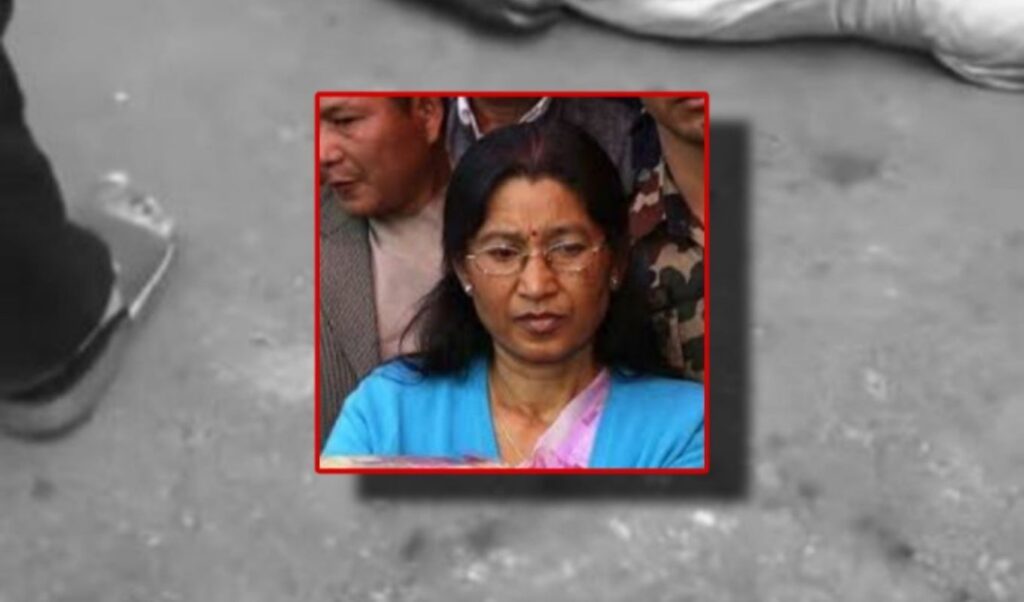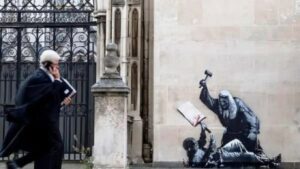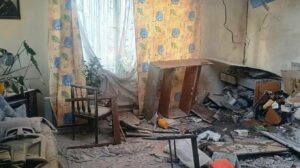In Nepal, the wife of former Prime Minister Jhala Nath Khanal tragically lost her life when protesters burned her alive in the capital Kathmandu. Rajalaxmi Chitrakar met a horrific death on Tuesday, September 9, 2025, when hundreds of angry demonstrators surrounded and set fire to the family residence in the Dhapou neighborhood. The tragic incident unfolded amid unprecedented social unrest that led to the prime minister’s resignation and the deployment of military forces.
The deadly attack on the former prime minister’s wife’s residence
Around 200 protesters, armed with clubs and Molotov cocktails, breached the residence perimeter around noon. Eyewitnesses described scenes of terror as the attackers blocked all exits, trapping the unfortunate woman inside the burning building.
Chitrakar’s son, Nirbik, managed to escape through a window and immediately alerted neighbors. Despite the rapid mobilization of firefighters, the flames spread with devastating speed due to the flammable materials used by the perpetrators.
When rescuers reached the scene, they found Chitrakar in critical condition with severe burns covering more than 70% of her body. Smoke inhalation dramatically worsened her condition, making any rescue attempt impossible. Despite being transferred to Kirtipur Burns Hospital, she succumbed to her injuries during treatment.
Chaos and bloodshed in Kathmandu’s streets
Nepal’s capital turned into a battlefield as thousands of Gen Z protesters occupied the main streets. The federal Parliament was invaded and engulfed in flames, while official documents burned in the streets amid anti-corruption chants.
Violent clashes with security forces left behind a horrific toll: at least 22 dead, including 19 young people killed on Monday by plastic bullets and tear gas. Over 500 people were injured in confrontations that extended from morning until late evening.
Police, initially equipped with shields and batons, were forced to escalate violence using plastic bullets. In many areas they retreated entirely, allowing protesters to occupy central squares and government buildings.
Prime minister’s resignation and military intervention
Prime Minister Khadga Prasad Sharma Oli announced his resignation hours after the attack on Chitrakar’s house, citing “moral reasons.” His decision came under pressure from public opinion and the escalation of violence that had spiraled out of control.
Nepal’s army, under General Ashok Raj Sigdel, deployed helicopters to evacuate ministers and parliament members. Tribhuvan Airport temporarily closed as political leaders were transported to safe locations.
Similar attacks occurred at the residences of President Ram Chandra Poudel and former Prime Minister Sher Bahadur Deuba, who was injured in the face during the attack.
The roots of social explosion
The ban on 26 social media platforms, including Facebook, X and YouTube, on September 4 triggered the explosion of anger. The government cited the need for “user registration,” but the move was interpreted as an attempt at censorship.
The deeper causes of the uprising lie in chronic problems affecting Nepal’s youth:
- Youth unemployment reaches 19.2% according to the International Labour Organization
- Over 25% of young people live below the poverty line
- Corruption scandals involving billions of rupees in public works
- Unfulfilled political promises for job creation
- Isolation from social networks they use for information
Spread of unrest across the country
Violent demonstrations spread rapidly beyond Kathmandu, reaching major cities like Lumbini, Birgunj and Pokhara. In each region, protesters targeted symbols of political power, government buildings and officials’ residences.
The Supreme Court suffered serious damage with destruction of important archives, while central offices of political parties were looted. Kathmandu’s mayor, Balendra Shah, appealed for restraint via livestream, but without result.
The uprising was organized without central leadership through encrypted apps like Signal, which avoided the government blockade. This decentralized structure made it impossible to control or negotiate with protesters.
International reactions and economic consequences
India and China, the two major neighboring powers, immediately offered diplomatic mediation to de-escalate the crisis. International organizations expressed concern about the human rights situation and protection of civilians.
Economic losses are already catastrophic for the country of 30 million inhabitants. Over 200 flights were canceled, while the tourism sector, vital to Nepal’s economy, suffered a serious blow.
Nepal now faces one of the most serious crises in its modern democratic history. The tragic death of Rajalaxmi Chitrakar and the mass youth uprising reveal deep cracks in the political system, with central demands for transparency, employment and an end to the corruption that has plagued the country.




